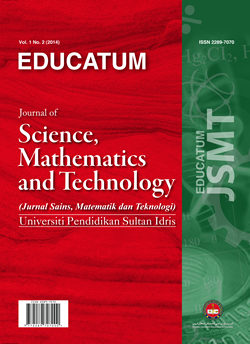Design and Construction of a Dual Powered Reverse Osmosis Based Mobile Water Treatment Plant for Military and Emergency Use
DOI:
https://doi.org/10.37134/ejsmt.vol12.1.12.2025Keywords:
water quality, ion exchange, filtration unit, water softening unit, reverse osmosis, military operationsAbstract
A mobile water treatment plant was designed, constructed and tested to provide potable drinking water from almost all-natural water sources during military operations and emergency situations. The treatment plant was designed to fit into a Tata LPTA 713/32 military grade truck with payload capacity of 2500kg.In order to design a plant to treat water from different sources, several water treatment methods were analyzed including existing mobile water treatment plants in the Nigerian Defence Academy (NDA) to give a combination of treatment processes that effectively treat 2.16 m3 of water per day serving 505 cadets their daily water requirements with no time lapse per treatment cycle within a short period of time. The treatment flow process majorly involves the use of ion exchange unit, filtration units, water softening unit and reverse osmosis as the main treatment unit. Autodesk inventor software was used in the design and analysis of the locally constructed components. After the selection of the design process a reverse osmosis-based water treatment plant with 8 hours run time was constructed with water grade materials and processes. The treatment plant was tested using water samples from river Kaduna, water runoffs and pond from the Nigerian Defence Academy environs. The samples were tested at the Kaduna Water Board laboratory and the results obtained showed that the treatment unit was effective in removing all harmful microorganisms and adjusting all physiochemical properties of water to meet the Nigerian Standard for Drinking Water Quality. The filtration unit was capable of effectively reducing turbidity to the standard for all the water sample tested. The highest value of turbidity of raw water recorded was 1105 NTU and it was reduced to 4.05 NTU. The water softening units was effective for the removal of hardness to the desired standards; the highest value recorded at 208 mg/l was reduced to 60 mg/l. The treatment plant was also effective in stabilizing the PH of all the water samples to almost neutral as the PH values of all the treated water samples were between 6.8 and 7.10. The reverse osmosis unit was responsible for the removal of unwanted ions and heavy metals had high removal rate after testing except for Cadmium from river Kaduna sample which was 0.7408 ppm and reduced to 0.3407 ppm still higher than the recommended standard 0.03 ppm. At the end of this work it was observed that the water treatment plant was stable and consistent in treating water including the removal of heavy metals and that the efficiency of the removal of heavy metals can be improved by increasing the number of the reverse osmosis unit.
Downloads
References
Huizinga R. P and Enserink B., (2020), Water in Military Stabilization Operations: Compressive Water Intervention Framework for Conflict Management and Peacekeeping, https://doi.org/10.2166/wp.2020.207 Pp 85-101.
https://www.goarmy.com/soldier-life/fitness-and-nutrition/components-of nutrition/hydration.html US Army Magazine, Hydration [accessed 7/9/2020]
Nisha Charkoudian; Robert W. Kenefick; Anthony J. Lapadula; Albert J. Swiston; Tajesh Patel; Laurie A. Blanchard; Elizabeth M. Caruso; Anthony J. Luippold; Samuel N. Cheuvront, (2016), Planning Military Drinking Water Needs: Development of a User-Friendly Smart Device Application Pg 181, 9:1142.
Garba, D.K (2018) Design and Construction of Dual Powered Dismountable Treatment Plant for Chief of Army Staff. Department of Mechanical Engineering NDA (unpublished)
Jafaru A. and Umar Zango, (2017) Design and Construction of Demountable Treatment Plant for Cadet Field Trip. Post Graduate Diploma Project Department of Mechanical Engineering NDA Post Graduate School Kaduna (unpublished).
https://www.researchgate.net/post/Water_Treatment_Plant_Efficiency [Accessed 19th December 2020].
Homeland Security News Wire (2013, June 28). Improved Water Purification Technology Reduces Logistical Burden. Available from http://www.homelandsecuritynewswire.com/dr20130627-improved-water-purification technology-reduces-logistics-burden. [Accessed 29th April 2020]
Spellman F.R (2003) Handbook of Water and Waste Water Treatment Plant Operations Boca Raton, Florida, CRC Press LLC
Drinan, J.E., (2001), Water & Waste- Water Treatment: A Guide for the Non-Engineering Professional, Technomic Publication, Lancaster, PA, pp.2–3.
Smith, R.K.,(1995), Water and Wastewater Laboratory Techniques, Water Environment Federation, Alexandria, VA, p.13
Demers, L.D. and Renner, R.C., (1992), Alternative Disinfection Technologies for Small Drinking Water Systems, Denver, CO, American Water Works Association and American Water Works Association Research Foundation.
Radin Mohamed, Radin Maya Saphira & Adnan, Mohamad & Mohamed, Mohd & mohd kassim, Amir Hashim.(2016). Conventional Water Filter (Sand and Gravel) for Ablution Water Treatment, Reuse Potential, and Its Water Savings. Journal of Sustainable Development. 9. 35. 10.5539/jsd. v9n1p35.
Churchill, Jack & Mumford, Kathryn. (2020). Granular Activated Carbon in Water Treatment. 10.1201/9781351032308-13.
Drinan, J.E., (2001), Water &Waste- water Treatment: A Guide for the Non engineering Professional, Technomic Publ., Lancaster, PApp.2–3.
Design Recommendation for Storage Tanks and Their Supports with Emphasis on Seismic Design (2010 Edition) Architectural Institute of Japan.
Pros And Cons of Storage Water Tanks Available In Different Materials Posted by ozfetch Aug 30, 2018 | https://neconnected.co.uk/pros-and-cons-of-storage-water-tanks-available-in-different-materials/[Accessed 24th November 2020]
Gagliardi, M.G. and Liberatore, L.J., (2000), Water Piping Systems, in Piping Handbook, 7th ed., Nayyar, M.L., Ed., McGraw-Hill, New York, p.C-26.
Spellman, F.R. and Drinan, J., (2001), Water Hydraulics, Technomic Publ., Lancaster, PA.
Metcalf &Eddy, (1981), Wastewater Engineering: Collection and Pumping of Wastewater, McGraw-Hill, New York, p.11.
https://www.researchgate.net/post/Water_Treatment_Plant_Efficiency [Accessed 19th December 2020].
Downloads
Published
Issue
Section
License
Copyright (c) 2024 R. S Hamalai, A. Sadiq, D.K Garba

This work is licensed under a Creative Commons Attribution-NonCommercial-ShareAlike 4.0 International License.





